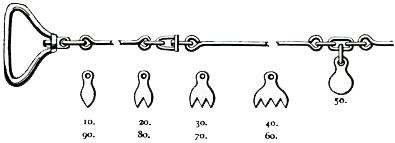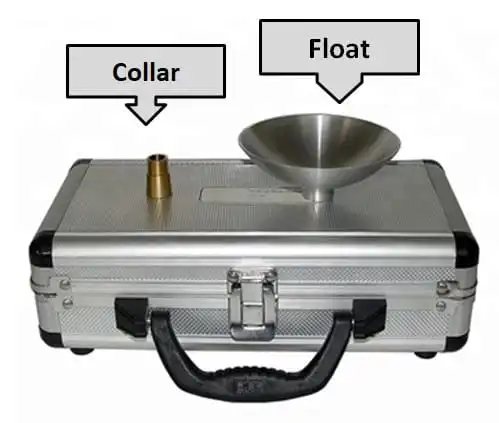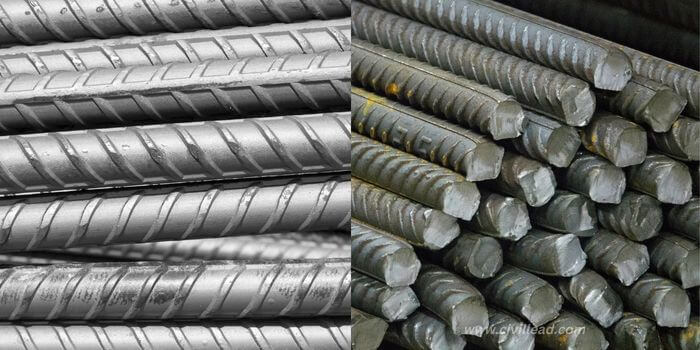Discover the diverse world of chains in civil engineering with this informative article. From metric chains to steel band chains, learn about their applications, advantages, and uses in construction projects.
Introduction
In civil engineering, chains play a crucial role in various applications, from measuring distances to supporting structures and transmitting power. Different types of chains cater to specific needs and tasks, ensuring safety, accuracy, and efficiency in construction projects. In this article, we will explore five different types of chains widely used in civil engineering and delve into their unique features and uses.
1. Metric Chains

Overview: Metric chains are precision tools commonly used by surveyors and engineers for measuring distances in the field. These chains are designed to provide accurate measurements and are calibrated in metric units.
Features and Applications: Metric chains are typically made of steel or other durable materials. They consist of evenly spaced links, each representing a specific metric length. Surveyors use metric chains to measure land boundaries, road distances, and topographic features. Engineers utilize these chains for site surveying, setting out construction points, and creating accurate drawings and plans.
Advantages: Metric chains offer high precision and are well-suited for tasks that require accurate metric measurements. They are reliable in various terrains and weather conditions, making them essential tools for land surveying and civil engineering projects.
2. Revenue Chains

Overview: Revenue chains, also known as decimal chains, are specialized measuring tools used for mapping and land assessment. They help surveyors calculate land area quickly and efficiently.
Features and Applications: Revenue chains consist of 100 links, with each link representing a decimal of a chain (approximately 7.92 inches or 20.12 centimeters). Surveyors use revenue chains to measure large areas of land, such as farms or estates, and determine their total acreage.
Advantages: Revenue chains offer ease of use and quick calculations. They are particularly valuable in surveying projects that involve vast land areas and require rapid assessments.
3. Engineer’s Chains

Overview: Engineer’s chains, also known as Gunter’s chains, were historically used for surveying and land measurement. While not as common today, they have historical significance in civil engineering.
Features and Applications: Engineer’s chains consist of 100 links, with each link representing one chain (66 feet or 20.12 meters). They were used in early surveying practices for measuring large tracts of land.
Advantages: Engineer’s chains were critical tools in the history of land surveying, providing a reliable method for measuring large areas. However, they have been largely replaced by more modern and precise measuring instruments.
4. Surveyor Chains

Overview: Surveyor chains are precision tools used for accurate land measurement and mapping. They have evolved from the historical engineer’s chains and are now widely used by surveyors.
Features and Applications: Surveyor chains typically consist of 100 links, with each link representing a specific length (often one foot or one meter). They are made of durable materials such as steel or fiberglass. Surveyor chains are used in modern land surveying projects to measure distances with high accuracy.
Advantages: Surveyor chains offer reliable and precise measurements, making them indispensable tools for modern land surveyors and civil engineers.
5. Steel Band or Band Chain

Overview: Steel band chains, also known as band chains, are used in surveying and construction for measuring distances and leveling.
Features and Applications: Steel band chains are made of flexible steel or fiberglass tapes with length markings. Surveyors use them to measure distances and elevation changes accurately. These chains are particularly useful in construction layout, road surveying, and topographic mapping.
Advantages: Steel band chains are lightweight, portable, and easy to use. They provide accurate measurements over varying terrain and are essential tools for surveyors and engineers in the field.
FAQs
Q: Are metric chains suitable for both small and large-scale measurements?
A: Yes, metric chains are versatile and can be used for both small and large-scale measurements. They provide accurate metric readings, making them suitable for various civil engineering and surveying tasks.
Q: Can revenue chains be used for precise surveying?
A: Revenue chains are primarily designed for rapid land assessment and area calculation. While they offer speed, they may not provide the level of precision needed for highly accurate surveying tasks.
Q: How do surveyor chains differ from engineer’s chains?
A: Surveyor chains are an evolution of the historical engineer’s chains. While both consist of 100 links, surveyor chains offer more precise measurements and are made from modern materials like steel or fiberglass.
Q: Are steel band chains resistant to weather conditions?
A: Yes, steel band chains are designed to withstand various weather conditions and can provide accurate measurements even in challenging environments.
Q: Can engineer’s chains still be used in modern surveying?
A: Engineer’s chains have historical significance but have been largely replaced by more advanced measuring instruments in modern surveying practices.
Conclusion
In civil engineering, various types of chains cater to different measurement needs, providing accuracy, efficiency, and reliability in construction projects. From the precision of metric chains to the historical significance of engineer’s chains and the versatility of steel band chains, each type plays a vital role in modern surveying and engineering. By understanding the unique features and applications of these chains, professionals in the civil engineering industry can make informed decisions and achieve successful project outcomes.
============================================







